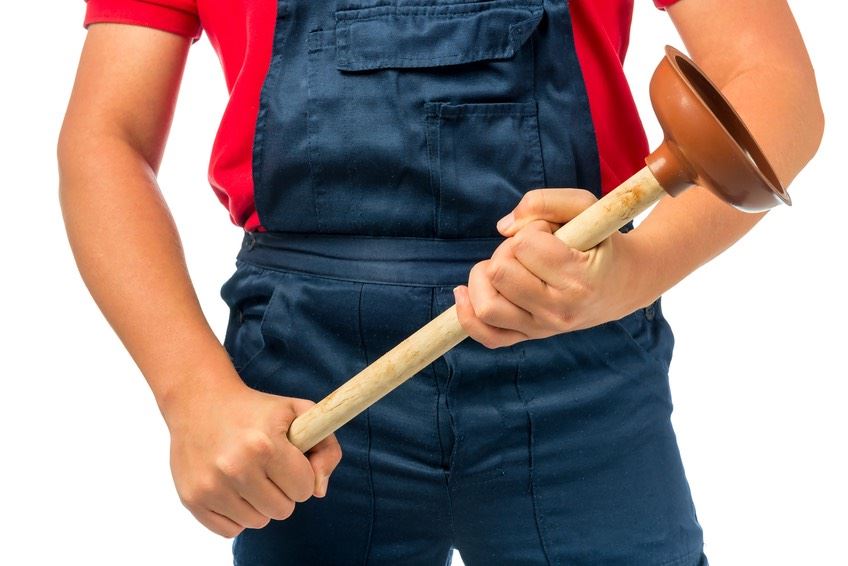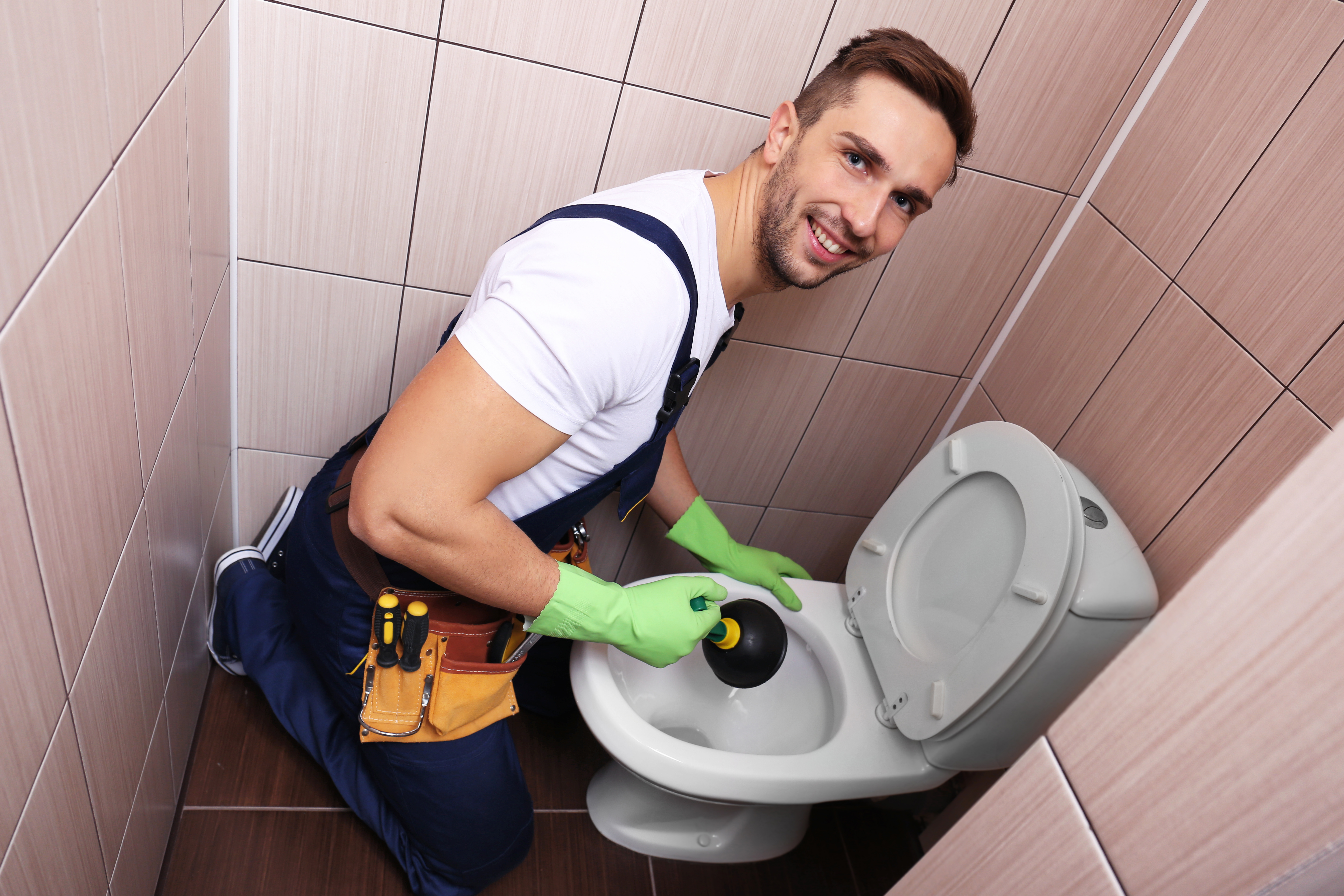Tips to Properly Utilize Plungers and Drain Cleaners: Pro Guidance
Tips to Properly Utilize Plungers and Drain Cleaners: Pro Guidance
Blog Article
This article in the next paragraphs relating to Here's How to Correctly Use a Toilet Plunger is immensely engaging. Read on and draw your own personal results.

Introduction
Correct maintenance of home drains is crucial for protecting against blockages and making certain smooth water flow. One of the trick tools in every homeowner's toolkit is the bettor, together with various drainpipe cleaners made to deal with persistent blockages effectively. This write-up explores just how to use plungers and drainpipe cleansers efficiently to maintain your drains streaming openly.
Section 1: Comprehending Plungers
Sorts of Plungers
There are numerous kinds of bettors available, each created for various types of drains and obstructs. One of the most common kinds consist of cup bettors, flange plungers, and accordion plungers.
Just How Plungers Work
Bettors service the principle of producing pressure and suction to displace clogs. When effectively applied over a drainpipe, they produce a vacuum cleaner that can pull out particles or separate obstructions.
Picking the Right Plunger
Choosing the appropriate plunger depends upon the sort of drain and the nature of the blockage. Mug bettors are suitable for sinks and tubs, while flange bettors are better matched for toilets as a result of their design.
Usual Mistakes with Bettors
Avoiding these errors guarantees efficient plunging: improper seal around the drain, not enough pressure, and not clearing surrounding particles.
Area 2: Using Plungers Successfully
Prep work
Prior to plunging, ensure the plunger covers the drain entirely and forms a limited seal. Clear any type of visible debris around the drainpipe opening.
Method
Begin with mild diving activities to construct suction. Rise stress progressively, making use of a steady rhythm. Repeat as necessary until the drainpipe gets rid of.
Repairing Tips
If diving doesn't work, try readjusting the seal, using oil jelly for a much better seal, or using a various sort of plunger.
Section 3: Understanding Drainpipe Cleansers
Types of Drainpipe Cleansers
Drain cleansers can be chemical or enzymatic. Chemical cleansers utilize solid chemicals to liquify clogs, while chemical cleaners make use of natural enzymes to break down organic matter.
How Drain Cleaning Company Job
Chemical cleansers react with clogs to liquify them, while chemical cleaners break down organic products like hair and oil without harming pipelines.
Safety and security Considerations
Always put on gloves and eye protection when making use of chemical drain cleaners. Make sure sufficient air flow and comply with manufacturer guidelines very carefully.
Eco-Friendly Alternatives
Consider making use of vinegar and baking soft drink or enzyme-based cleaners for green options that are much safer for pipelines and the setting.
Area 4: Making Use Of Drain Cleaners Efficiently
Application Techniques
Put chemical cleansers straight into the drain opening. Permit them to benefit the suggested time before purging with warm water. Enzymatic cleaners need to rest overnight.
Precautions
Stay clear of mixing various kinds of cleaners, as this can generate harmful fumes. Never ever utilize chemical cleaners combined with a plunger, as spilling can happen.
Handling Stubborn Obstructions
For consistent obstructions, consider making use of a plumbing snake or calling a specialist plumbing to stop damages to pipes.
Final thought
Finally, understanding how to make use of bettors and drain cleansers successfully is vital for maintaining healthy and balanced plumbing systems. By picking the right tools and strategies, house owners can tackle small clogs and protect against major pipes issues down the line.
How To Properly Use A Plumbing Snake To Clear Drains
When any drain clogs in our home arise, we tend to gravitate toward the plunger and little else. In cases where the plunger and its vacuum-created pressure are not able to clear clogs, many immediately move to harmful chemicals or simply call their plumber to fix the issue.
we’re happy to help with all drain cleaning needs and concerns. This includes informing you on a few other home remedies you may have at your disposal for minor to moderate clogs, one of which is the use of a plumbing snake. Many people have never used one of these before – let’s go over the steps to take when your drain clogs and you have a plumbing snake available.
Attempt Plunger Use
The first step here, as we noted above, should indeed be to grab your plunger when you notice a drain clog and attempt to resolve it this way. If you’re unsure how to use a particular type of plunger, our plumbers can answer any questions you have. If this doesn’t do the trick, however, you move on to the snake.
Locate And Prepare Snake
A plumbing snake is a metal or plastic device that’s generally about a quarter of an inch thick. It’s design with significant extensions, meant to reach down into your clogged drain and push the clog out. Snakes also contain drain augers that will latch onto and push stubborn blockages.
If your plunger doesn’t clear a clog, locate your snake and bring it to the drain in question. We also recommend keeping a bucket nearby to collect the clog once you pull it out, plus we’d advise wearing goggles and possibly protective gloves.
Feed Snake
Once you’re ready to go, feed the snake slowly down the drain, using the crank device it comes with to keep it moving until it finds the clog. Once this happens, much of the clog will be latched onto the coil so you can pull it out, while the rest will simply break up and flow downward.
Detach Debris
Remove the snake slowly from the drain, and once you’ve done so, pick off any debris that’s stuck to the coil. This is another area where wearing gloves is a must.
Flush Drain
Finally, take a few minutes to ensure the snake has done its job correctly. If you’ve been using it on a toilet, flush the toilet a couple times and make sure everything flows well. If you’ve used it on a different drain, flush it with some room temperature water.
https://www.mybuddytheplumber.com/blog/how-to-properly-use-a-plumbing-snake-to-clear-drains/

Application Techniques
Put chemical cleansers straight into the drain opening. Permit them to benefit the suggested time before purging with warm water. Enzymatic cleaners need to rest overnight.
Precautions
Stay clear of mixing various kinds of cleaners, as this can generate harmful fumes. Never ever utilize chemical cleaners combined with a plunger, as spilling can happen.
Handling Stubborn Obstructions
For consistent obstructions, consider making use of a plumbing snake or calling a specialist plumbing to stop damages to pipes.
Final thought
Finally, understanding how to make use of bettors and drain cleansers successfully is vital for maintaining healthy and balanced plumbing systems. By picking the right tools and strategies, house owners can tackle small clogs and protect against major pipes issues down the line.
How To Properly Use A Plumbing Snake To Clear Drains
When any drain clogs in our home arise, we tend to gravitate toward the plunger and little else. In cases where the plunger and its vacuum-created pressure are not able to clear clogs, many immediately move to harmful chemicals or simply call their plumber to fix the issue.
we’re happy to help with all drain cleaning needs and concerns. This includes informing you on a few other home remedies you may have at your disposal for minor to moderate clogs, one of which is the use of a plumbing snake. Many people have never used one of these before – let’s go over the steps to take when your drain clogs and you have a plumbing snake available.
Attempt Plunger Use
The first step here, as we noted above, should indeed be to grab your plunger when you notice a drain clog and attempt to resolve it this way. If you’re unsure how to use a particular type of plunger, our plumbers can answer any questions you have. If this doesn’t do the trick, however, you move on to the snake.
Locate And Prepare Snake
A plumbing snake is a metal or plastic device that’s generally about a quarter of an inch thick. It’s design with significant extensions, meant to reach down into your clogged drain and push the clog out. Snakes also contain drain augers that will latch onto and push stubborn blockages.
If your plunger doesn’t clear a clog, locate your snake and bring it to the drain in question. We also recommend keeping a bucket nearby to collect the clog once you pull it out, plus we’d advise wearing goggles and possibly protective gloves.
Feed Snake
Once you’re ready to go, feed the snake slowly down the drain, using the crank device it comes with to keep it moving until it finds the clog. Once this happens, much of the clog will be latched onto the coil so you can pull it out, while the rest will simply break up and flow downward.
Detach Debris
Remove the snake slowly from the drain, and once you’ve done so, pick off any debris that’s stuck to the coil. This is another area where wearing gloves is a must.
Flush Drain
Finally, take a few minutes to ensure the snake has done its job correctly. If you’ve been using it on a toilet, flush the toilet a couple times and make sure everything flows well. If you’ve used it on a different drain, flush it with some room temperature water.
https://www.mybuddytheplumber.com/blog/how-to-properly-use-a-plumbing-snake-to-clear-drains/

I came across that write up about How to Unclog Your Sink with a Plunger while browsing the web. In case you enjoyed reading our blog entry plz don't forget to share it. I take joy in your readership.
Contact Us Now Report this page